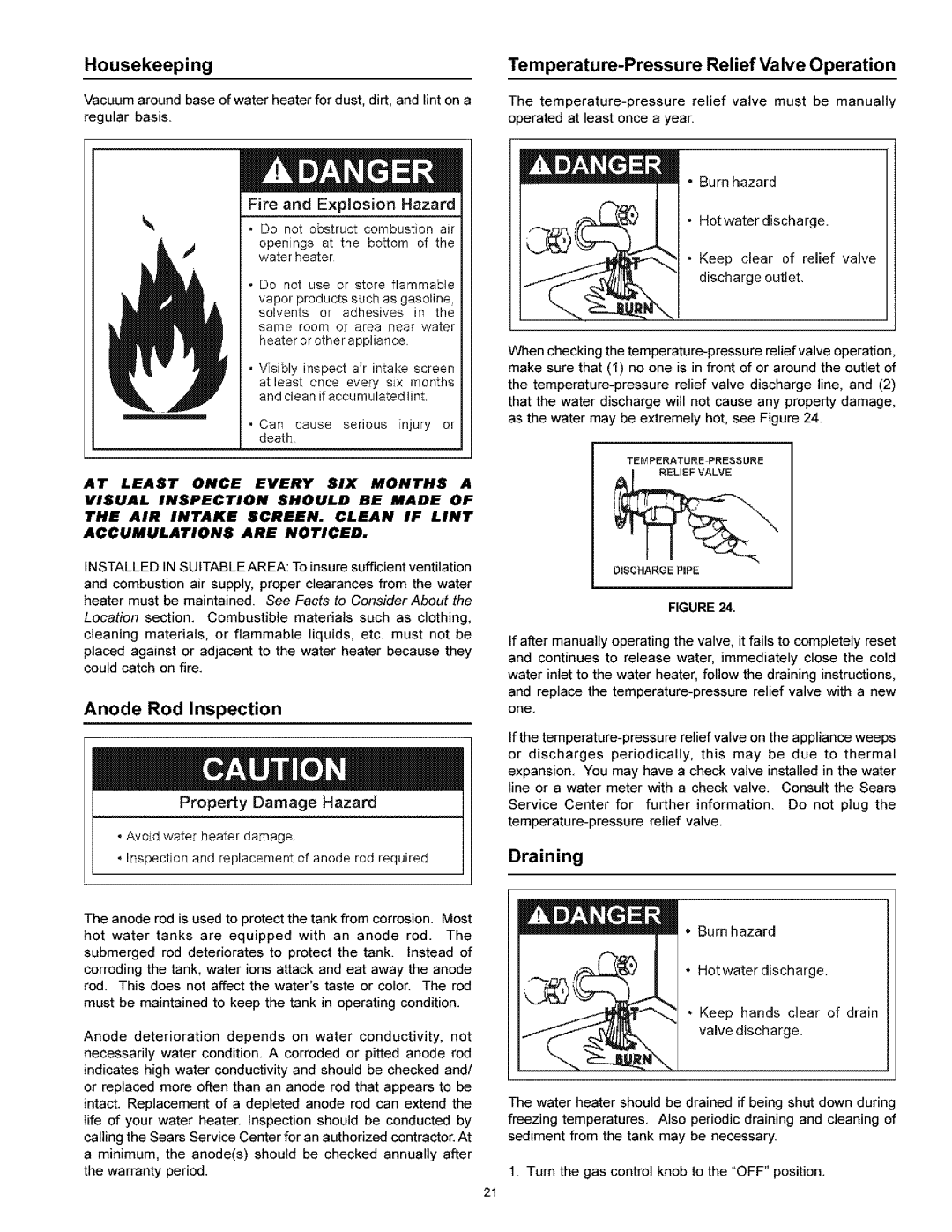
Housekeeping
Vacuum around base of water heater for dust, dirt, and lint on a
regular basis.
Fire and Explosion Hazard
*Do not obstruct combustion air
openings at the bottom of the water heater
. Do not use or stere flammable
vapor products such as gasoline, solvents or adhesives in the same room or area rlear water
heater or other appliance
•Visibly inspect air intake screen at least once every s_x months and clean if accumulated lint
. Can cause serious injury or death
AT LEAST ONCE EVERY SIX MONTHS A
VISUAL INSPECTION SHOULD BE MADE OF
THE AIR INTAKE SCREEN. CLEAN IF LINT
ACCUMULATIONS ARE NOTICED.
INSTALLED IN SUITABLEAREA: To insure sufficient ventilation
and combustion air supply, proper clearances from the water heater must be maintained. See Facts to Consider About the
Location section. Combustible materials such as clothing, cleaning materials, or flammable liquids, etc. must not be placed against or adjacent to the water heater because they could catch on fire.
Anode Rod Inspection
Property Damage Hazard
. Avoid water heater damage
° IrlspectJon arid replacement of anode rod required
The anode rod is used to protect the tank from corrosion. Most hot water tanks are equipped with an anode rod. The submerged rod deteriorates to protect the tank. Instead of
corroding the tank, water ions attack and eat away the anode red. This does not affect the water's taste or color. The rod
must be maintained to keep the tank in operating condition.
Anode deterioration depends on water conductivity, not necessarily water condition. A corroded or pitted anode rod indicates high water conductivity and should be checked and/ or replaced more often than an anode rod that appears to be intact. Replacement of a depleted anode rod can extend the life of your water heater. Inspection should be conducted by calling the Sears Service Center for an authorized contractor. At a minimum, the anede(s) should be checked annually after the warranty period.
Temperature-Pressure Relief Valve Operation
The
•Burn hazard
•Hot water discharge.
•Keep clear of relief valve discharge outlet.
When checking the
TEMPERATURE PRESSURE
DISCHARGE PiPE
FIGURE 24.
If after manually operating the valve, it fails to completely reset and continues to release water, immediately close the cold water inlet to the water heater, follow the draining instructions, and replace the
If the
expansion. You may have a check valve installed in the water line or a water meter with a check valve. Consult the Sears
Service Center for further information. Do not plug the
Draining
•Burn hazard
•Hot water discharge.
. Keep hands clear of drain valve discharge.
The water heater should be drained if being shut down during freezing temperatures. Also periodic draining and cleaning of sediment from the tank may be necessary.
1. Turn the gas control knob to the "OFF" position.
21
